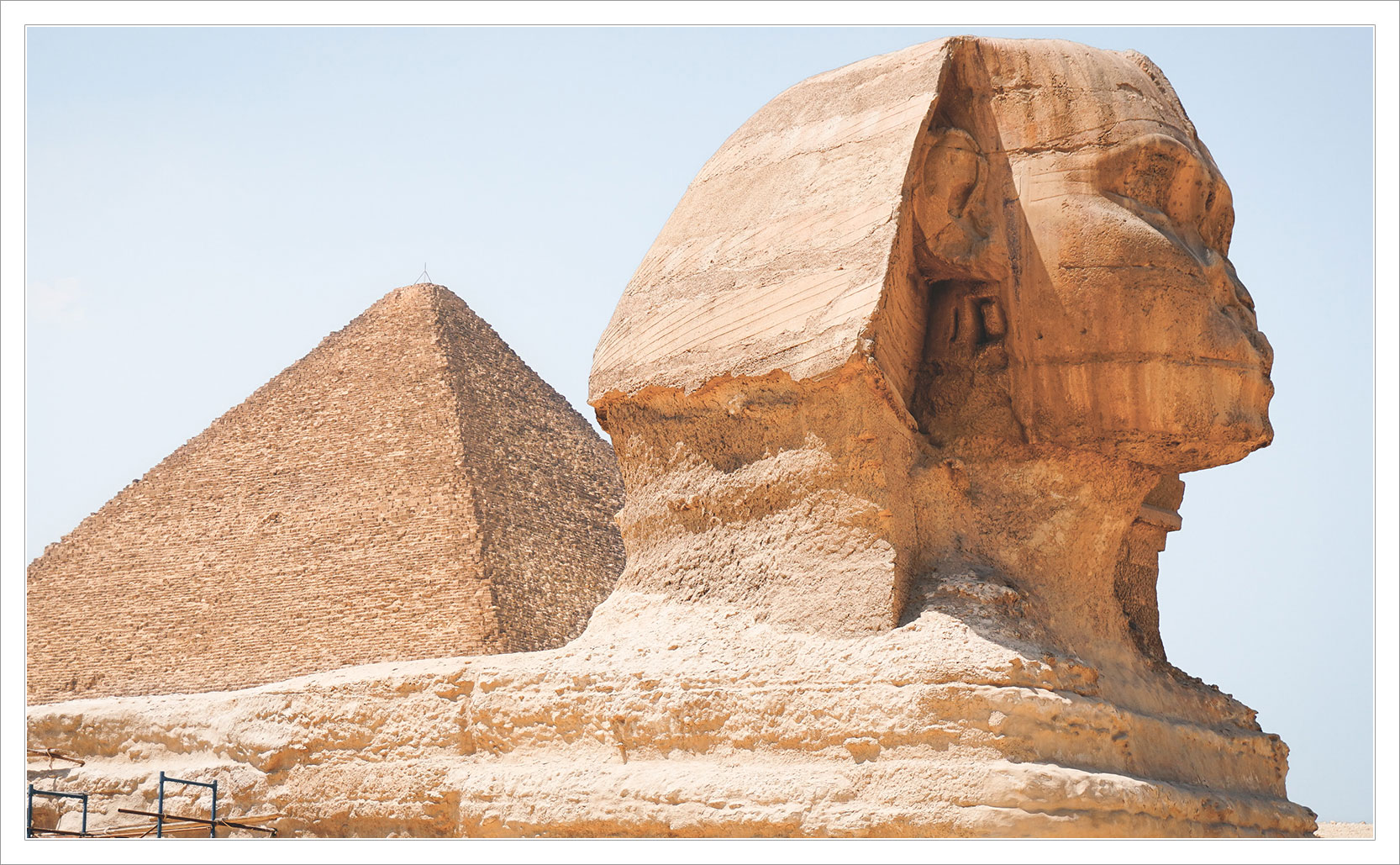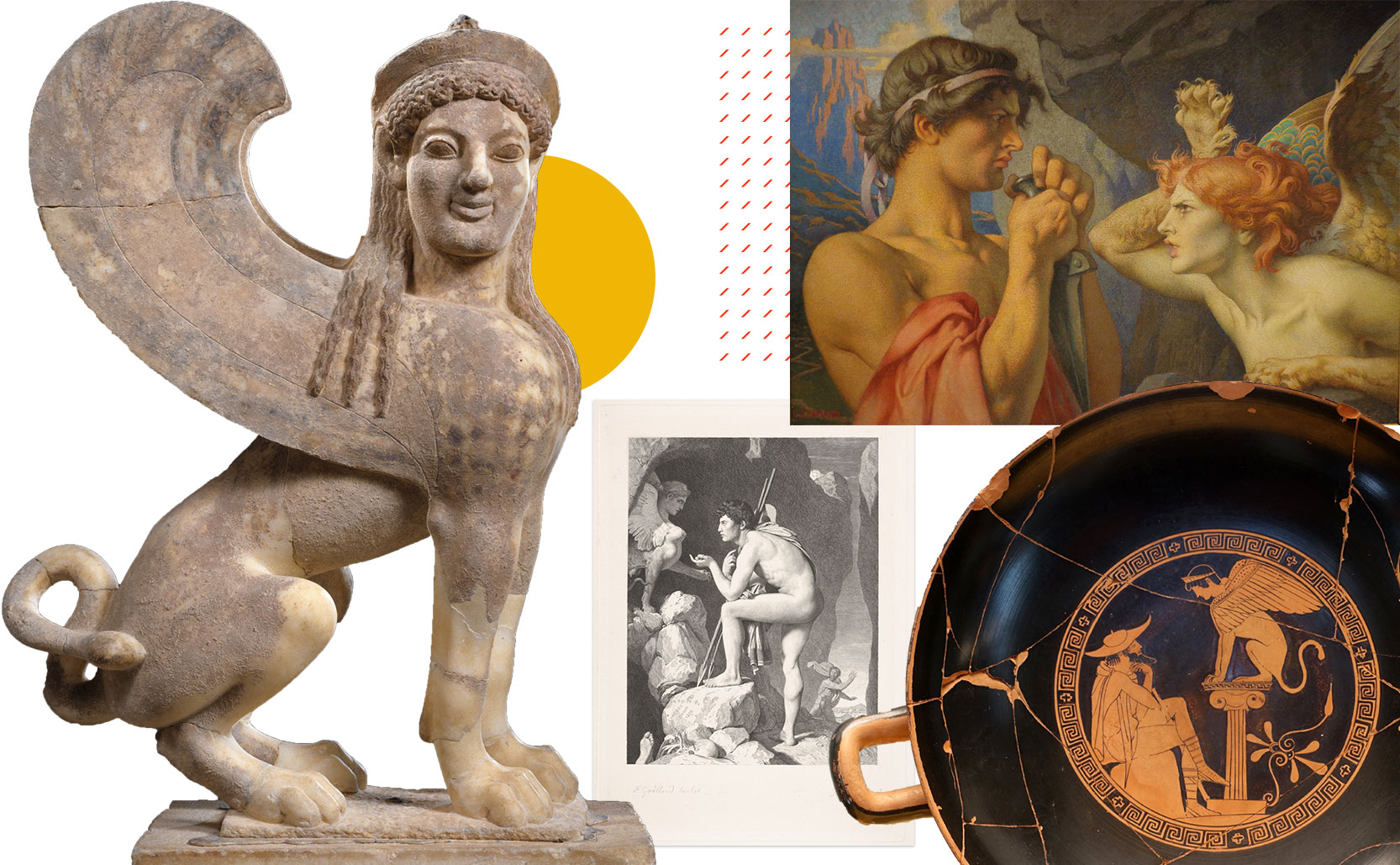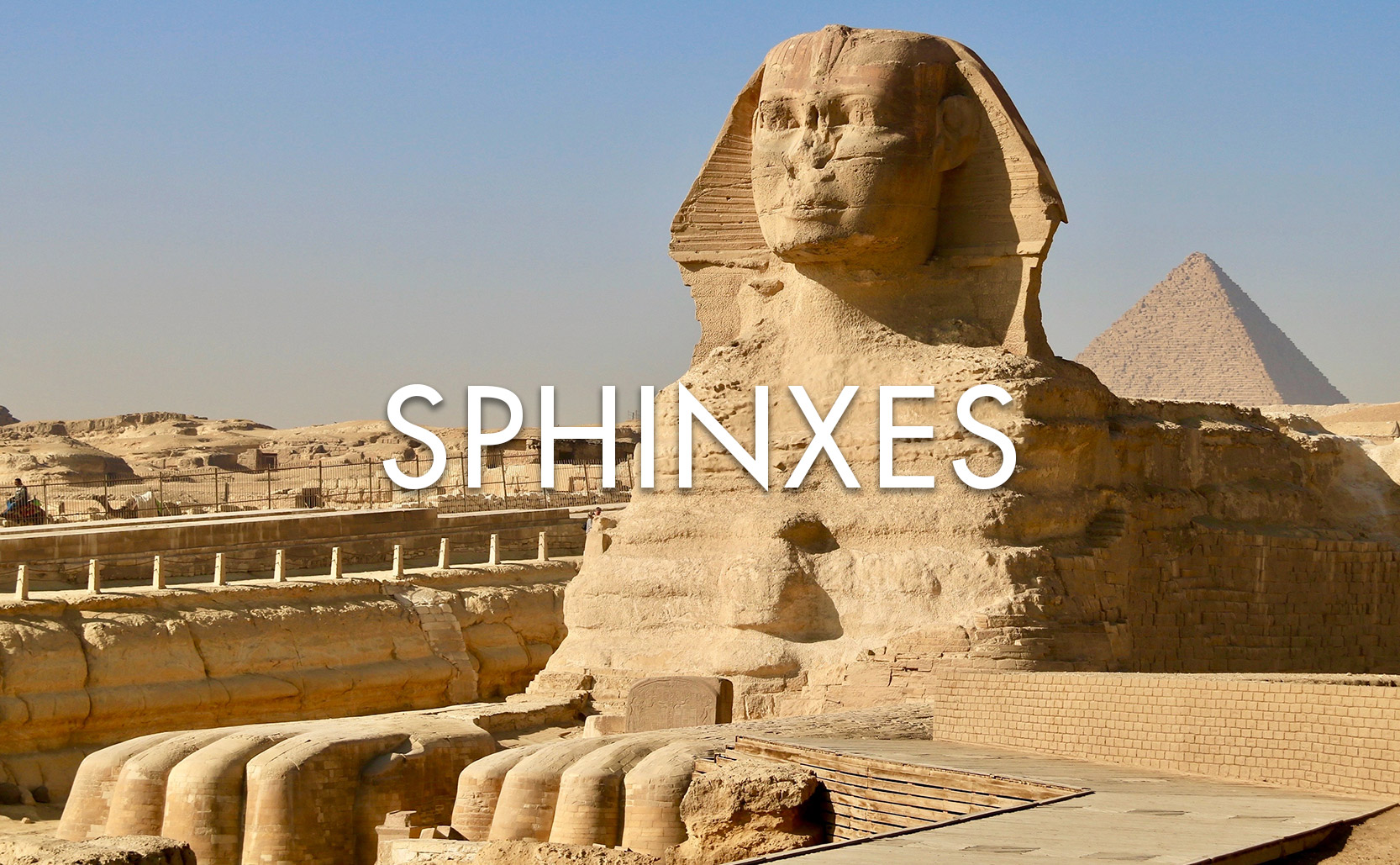The mythical sphinx spans thousands of years around the ancient world. Also, technically, the Great Sphinx of Giza isn’t a “sphinx”.
The sphinx is a human-animal hybrid chimera (except not a literal chimera). At its most basic it is part human part lion with other design options available depending on the culture.
Egypt, the protector sphinx
The first human-lion hybrids come from Egypt. While most Egyptian human-animal hybrids are animal heads on human bodies, the sphinx is the other way around. To borrow from Spinal Tap, “No one knows who they were or what they were doing” – no one knows what these creatures were called in Egyptian culture nor is anyone exactly sure what they were meant to do. It’s thought they were created as protectors, defending royal tombs, but nobody is certain. They were frequently carved with the face of whichever pharaoh’s tomb they were beside and as such most Egyptian sphinxes are male.

As for the largest, oldest, and most famous sphinx of them all, while it was built somewhere between 2600 BCE and 2500 BCE, no one is exactly sure who built the Great Sphinx of Giza or why. It’s thought to have been commissioned by (and is thought to have the face of) the pharaoh Khafre. It’s positioned facing East near the Great Pyramid of Khufu (the tomb of Khafre’s father). Khafre also built himself a pyramid caddy corner to his father’s, just 10 feet shorter.

It’s hard to appreciate just how old the Great Sphinx is (and how long sphinxes have been a part of Egyptian culture). The pyramid complex had been built and subsequently abandoned so long ago that the Sphinx was buried in sand up to its shoulders by the time the first excavation attempt took place in 1400 BCE. That means the first excavation was around a 1000 years after the Sphinx was built and that was still around 3400 years ago. Trying to rescue the Great Sphinx from the desert sands has been going on for thousands of years.

Greece, the monster sphinx
Sphinxes spread counterclockwise around the Mediterranean from Egypt to the Middle East, to Mesopotamia, and into Greece around 1600 BCE – the visual design and meaning changing along the way. In Greek mythology there was a single sphinx (not numerous sphinxes like in Egypt) who was also a human-lion hybrid but was female and she had wings.
The Greek sphinx comes to us through the story of Oedipus. This sphinx is more of a monster than her Egyptian counterparts (she is inline with other Greek female monsters, like the gorgons). As Oedipus is traveling to Thebes he encounters the sphinx. The city of Thebes is at her mercy as she offers a challenge to all who want to enter the city: she will grant safe passage if you can successfully answer a riddle. If you fail she kills you. Oedipus correctly solves the riddle and the sphinx (dramatically) kills herself … and this isn’t even the craziest part of the Oedipus story (paging Dr. Freud).
The word “sphinx” was both the specific name of the sole Greek sphinx as well as a general term the Greeks used for these kinds of creatures (like what we do today). That said, the word “sphinx” is of Greek origin and so technically outside of Greece these creatures aren’t “sphinxes”. While the Greeks may have called the Egyptian creatures “sphinxes” the Egyptians did not. The word “sphinx” didn’t even exist until over 2000 years after the Great Sphinx of Giza, so again what the Egyptians called these things is something else unknown.
The Greek sphinx also influenced South and Southeast Asian cultures where sphinxes are seen as holy guardians at temples and other religious sites. In these places the sphinxes are meant to ward away evil and cleanse the sins of religions devotees.

Egyptomania
Sphinxes (both the male Egyptian kind and the winged female Greek kind) made appearances in European art from the 15th century onward but their greatest surge in popularity was during the 19th century Egyptology and Egyptomania craze. After Napoleon’s campaign in Egypt from 1798-1801 the French brought treasures to France which led to an interest in all things ancient Egypt. Bits of this can still be found in Egyptian Revival architecture which features pyramids, sphinxes, and other Egyptian motifs.
Also, on the topic of the French in Egypt, Napoleon’s troops did not shoot off the Great Sphinx of Giza’s nose. One story is that around 1378 CE a Sufi Muslim named Muhammad Sa’im al-Dahr destroyed the nose in an attempt to stop a cult that was making religious offerings to the Great Sphinx. Muhammad Sa’im al-Dahr was supposedly executed for defacing the Great Sphinx. The Great Sphinx also had a beard but it most likely fell off from erosion of sitting in the desert for thousands of years.
Added info: Egyptian culture had yet another resurgence in western popularity with the 1922 discovery of King Tutankhamun’s tomb. Two years later in 1924 H.P. Lovecraft was the ghostwriter of Harry Houdini’s Under the Pyramids, an adventurous tale of Houdini’s kidnapping and imprisonment under the pyramids. The Great Sphinx plays a pivotal role in this supposedly true tale.
Also, the hairless Sphynx cat breed is not from Egypt, but rather is from Toronto, Canada.





